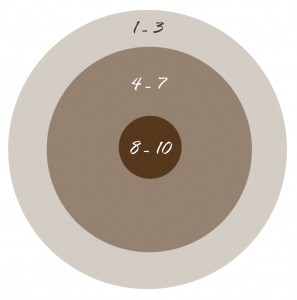Why You Need to Lower the Bar for Leadership – JD Payne

The examples prized in church planting today, particularly in the North American context, are generally reproducible only by this minority. The ecclesiology and missiology, while mostly not lacking biblical support, is often encased with a great deal of Western cultural expectations.
Time for a larger table
We have created a table for the 8-10-caliber leaders, with little room for anyone else.
It is time to enlarge the church planting table to make room for the majority of potential missionaries who are just as biblically qualified and called, but unable to support strategies, methodologies, and ecclesiologies developed by high-caliber church leaders.
What is most unfortunate is that while we would never turn away potential church planters who fall into the 1-7-caliber range, we ask them to come to the little table that is in place and pull up a chair.
We tell David to kill Goliath, and expect him to wear Saul’s armor. Whenever he insists that he needs to remove such encumbrances, we permit it, but look at him as if he has lost his mind. Maybe we have lost our minds…
It is time to enlarge your church planting table, making room for the majority of potential missionaries in the Body of Christ.
Pastors, you need to stop looking elsewhere for the high-caliber church planters you don’t have to send from your churches, and start equipping and mobilizing the 1-3′s and the 4-7′s that the Lord has entrusted to your care. Be faithful with what you have. If you have the 8-10-caliber leaders, then be faithful with them as well.
How to kill a movement
It is my concern that if we do not enlarge our church planting tables, then the church planting momentum that we are currently seeing in North America may soon come to an end. Any time we elevate, promote, and expect only that which can be reproduced by the few, we show just how unwise we are when it comes to being a good steward with the Body of Christ.Just look to the 1970s for the smaller churches that could not “do” Sunday School and bus ministries like the few churches who were set forth as the model to achieve. Consider the 1980s and 90s for the church growth methodologies that only the few were able to reproduce, while we created the atmosphere that “If you are not doing it their way, then you are not doing well.” A fallout from these once wide-spread trends is that when the majority realized that they were not able to reproduce the models, frustration and apathy were some of the results.
I do not want to see church planting become something that was trendy, and “now it is time to return to what we can do for Kingdom advancement.” I do not want churches to look at the present trends and say, “Well, if that is church planting, then we do not have what it takes.”
The way to help churches realize that they have what it takes is to change the definitions, expectations, and what is set as the measuring rod.
How big is your table?
So, how big is your church planting table in your denomination, network, or local church? What are you pointing others toward as the way to do it “right”? Have you created expectations that will set up the majority for failure?As a leader, if you are only reading the books and attending the conferences geared toward the minority of potential church planters in North America, then you need to change directions.
It is time to enlarge our church planting tables, making room for the majority. If we do, then we are likely to be much closer to experiencing the multiplication of disciples, leaders, and churches that we all desire.
There are over 4 billion people in this world without Jesus. 75% of the population of the United States and Canada also fall into this massive number of lostness. I think we need everyone we can get to the table. Don’t you?
It is time to put some extra leaves in our tables and add a lot more chairs.
This article was originally posted at jdpayne.org.
No comments:
Post a Comment